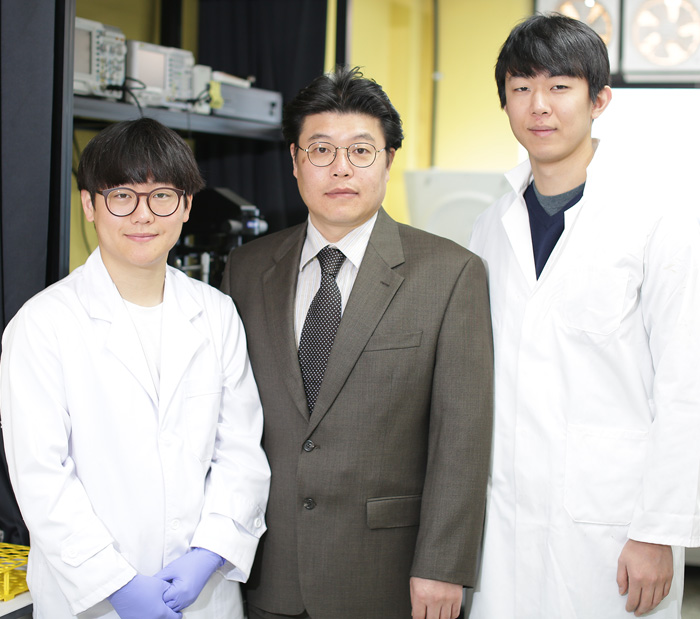Research Stories
Simple and Disposable Biosensors for Point-of-care Applications
Nanoparticle polymer composites have wideranging applications in fields such as catalysis, optoelectronics, drug delivery and biochemical sensing.
Chemical Engineering
Prof.
KIM, DONG HWAN
Nanoparticle polymer composites have wideranging applications in fields such as catalysis, optoelectronics, drug delivery and biochemical sensing. In recent years, the use of noble metal nanoparticle polymer composites for plasmonic sensing has attracted much attention, including several fabrication methodologies for such nanocomposites for the development of a substantial collection of plasmon-active sensing devices. One of the greatest advantages of nanoparticle polymer composites on solid substrates is their convenient utilization in practical applications, as they can be readily produced on gold and silicon substrates, glass, and even paper. This makes them more suitable than solution phase nanoparticle polymer composites for device integration, bringing them closer to commercialization and consumer use. To facilitate rapid technology transfers in the near future, an in-depth understanding of the subject matter as well as an update of the state-of-the-art is therefore necessary. The research team describes the assembly techniques used to obtain such nanoparticle polymer composites and their applications in plasmonic sensing based on localized surface plasmon resonance (LSPR) and surface enhanced Raman spectroscopy (SERS).
Scheme 1 : Several general configurations of metal nanoparticle polymer composites discussed including nanoparticles (I) immobilized on a thin polymeric film adsorbed or spin-coated on a substrate, (II) three-dimensionally distributed within a polymer gel matrix, (III) adsorbed on polymer brush grafted-to or -from the substrate, (IV) infiltrated within the brush, (V) decorated on polymer fibers electrospun on the substrate and (VI) decorated on free-standing polymer fibers.
Scheme 2 : Assembly of nanoparticles on substrate-bound polymers, categorized according to their level of mobility with respect to the underlying substrate. The nanoparticles are categorized as (I) fixated, (II) semi-fixated and (III) non-fixated.

